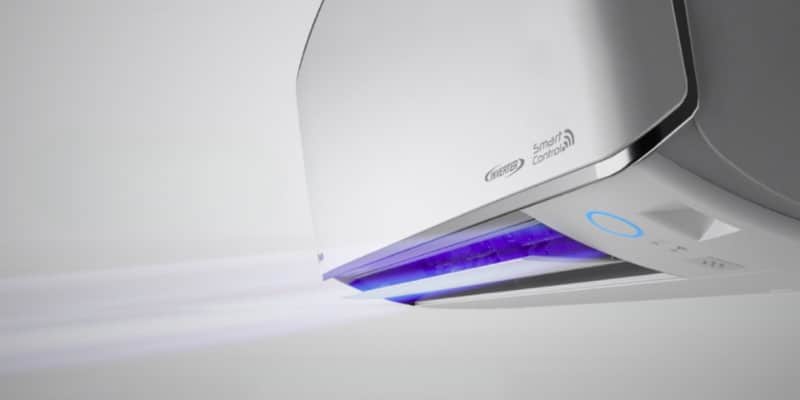In advanced HVAC systems, every feature and function has a purpose. Each element is meticulously designed to enhance user experience and deliver optimum performance, from the precise temperature settings to the various modes. Among these features are the indicator lights, which often go unnoticed until they behave differently or display an unfamiliar color. For Daikin users, the purple light has been a topic of intrigue. What does it signify?
Is Daikin’s purple light indicating a problem or a particular mode? In this comprehensive guide, we dive deep into the meaning of the Daikin purple light, its significance, and its role in ensuring your air conditioning unit runs efficiently.
The Role of Indicator Lights on Air Conditioners
Air conditioners have come a long way since their inception, with modern units packed with sophisticated features. One such advancement is the inclusion of indicator lights. These lights serve as immediate feedback mechanisms, alerting users to the unit’s current operation or potential issues. But why are they so crucial?

Think of indicator lights as the AC’s way of communicating. Just as a traffic light signals drivers, these lights guide users in understanding their air conditioner’s current mode or if there’s a need for attention.
Daikin, renowned for its advanced HVAC systems, employs a range of indicator lights. Among them, the purple light often mystifies many users.
Decoding the Daikin Purple Light
Primarily, a steady purple light on a Daikin unit typically signifies the “Quiet” mode. It’s a feature that reduces operational noise, ensuring a peaceful environment.
However, interpretations might vary depending on the unit’s model and regional differences.
While a steady purple light indicates a specific mode, a flashing one suggests something different.
Flashing vs. Steady: A steady light often represents a selected feature or mode. In contrast, a blinking light, regardless of color, usually hints at a problem or alert.
If your Daikin’s purple light is flashing, it might signal a particular malfunction or a setting requiring your attention.
Other Indicator Lights on Daikin AC Units
Understanding the Daikin purple light is just the start. Daikin units come equipped with a variety of indicator lights, each conveying a unique message.
Guide to Daikin’s Indicator Lights:
- Green Light: This signals that the unit is powered and operating normally.
- Orange Light: It lights up when the timer function is activated, ensuring you know when this feature is in use.
- Red Light: A cause for concern. This light usually suggests a potential malfunction or an error that needs immediate attention.
Steps to Take If Your Purple Light Indicates an Issue
If you’ve discerned that the flashing purple light on your Daikin AC indicates a problem, it’s essential to address it promptly.
Addressing the Flashing Purple Light:
- Consult the User Manual: Daikin provides detailed manuals with all its units. This should be your first point of reference.
- Power Cycle the Unit: Turn off the unit, unplug it, wait a few minutes, and then power it back on. Sometimes, a simple reset can resolve minor glitches.
- Call in a Professional: If the light continues to flash or if you’re unsure, it’s best to contact a professional technician.
Tips for Maintaining Your Daikin Air Conditioner
To ensure longevity and efficient performance, it’s crucial to maintain your Daikin air conditioner regularly.
- Regular Cleaning: Dust and debris can clog the filters, reducing efficiency. Ensure you clean or replace them as recommended.
- Understanding Modes: Familiarize yourself with the different operational modes. For instance, the “Quiet” mode, signified by the purple light, is perfect for nighttime usage.
- Address Indicator Lights Promptly: Whether it’s the purple light or any other, attend to it swiftly to prevent potential complications.
Indicator lights, like the Daikin purple light, are more than aesthetic features. They are vital tools that communicate the air conditioner’s status. Recognizing their meanings can lead to timely interventions, ensuring your unit’s longevity and optimal performance. Always remember: consult your user manual or seek professional assistance when in doubt.






